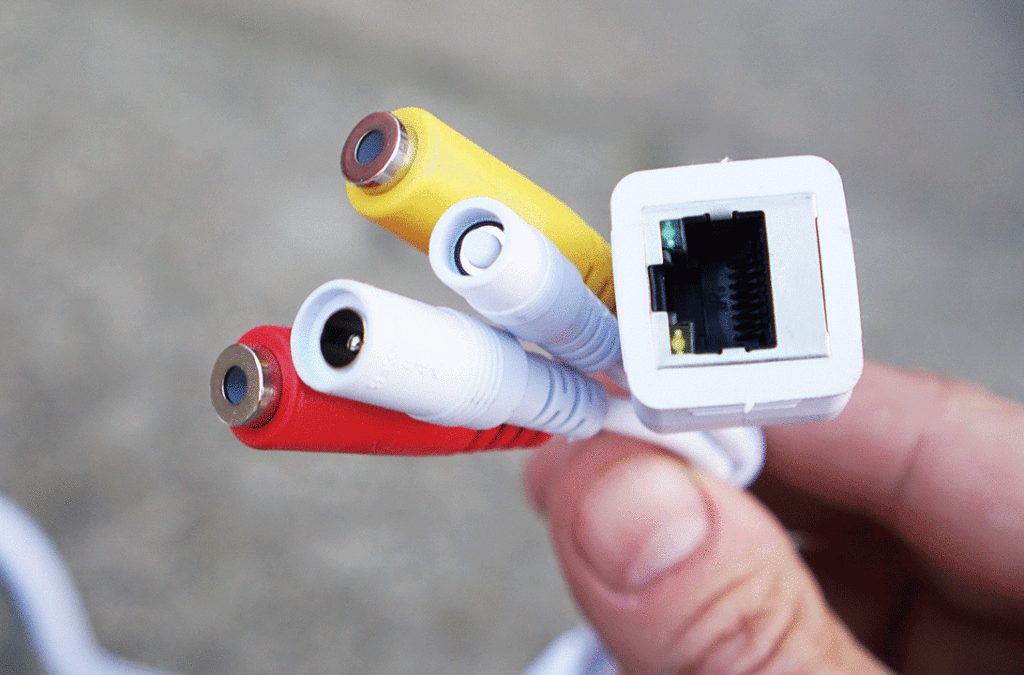
How to connect a microphone to IP cameras?
Many multi-functional IP cameras have audio input and output to provide audio monitoring and recording functionalities. To connect the microphone to IP camera's audio input is not as complicated as you expect. However, in addition to the audio connection, the microphone requires power supply to work in many cases.
There are two types of microphones: Active and Passive.
- Active microphones have a built-in pre-amp, and require power to operate.
- Passive microphones do not have built-in amplifiers, however sometimes can require power.
1# Connecting a microphone to IP cameras
Active microphones
Depending on the pre-amp the microphone might require:
- 12VDC. In this case the microphone has to be powered with a 12V DC power supply. These types of microphones are called LINE LEVEL MICROPHONES (Figure 1).
- 1.8VDC - 4.5VDC. In this case the Microphone will be powered right from the IP camera itself. These types of microphones are called MIC LEVEL MICROPHONES (Figure 2).
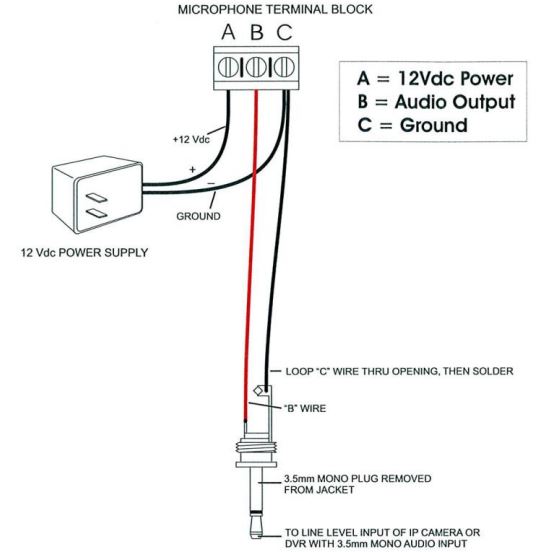
Depends on connector's type, the microphone connection may use a 3.5mm stereo jack or RCA connector.
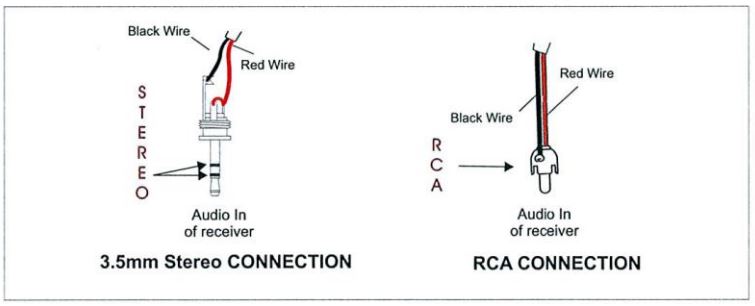
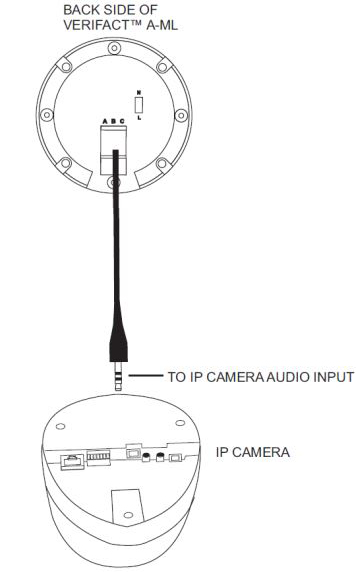
After the microphone has been successfully connected to the camera, users need to change the camera settings to enable audio recording.
Taking Hikvision IPC as an example, users need log in to the camera:
Go to "Advanced Setting" > "Video/Audio" > “Audio" > change the microphone type to "LINE IN" if using a line level microphone, or change the microphone type to "MIC IN" if using a mic level microphone.
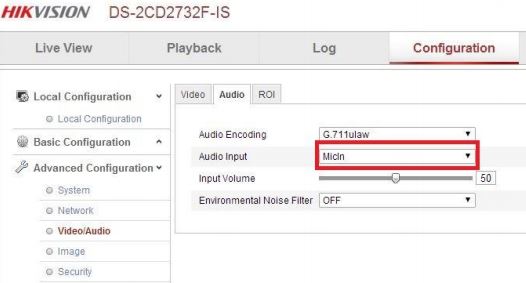
2# How to choose microphones for video surveillance?
By the way, you may need to choose a suitable microphone for audio monitoring. Typically, users need to know two specifications when selecting the microphone.
microphone types
- Omni-directional - the microphone can collect the sound from every corners (360 degree angle).
- Unidirectional - A unidirectional microphone is sensitive to sound from only one direction.
microphone sensitivity
It's recommended to choose a high sensitivity, high signal to noise ratio microphone for audio monitoring and recording. If you decide to DIY a microphone, you can choose WM-61A Omni-directional Back Electret Condenser Microphone Cartridge which provides -35+/-4dB high sensitivity.
Product Example: Louroe A-ML microphone
Louore is the world leader in the audio security industry, providing first-class audio monitoring for security applications. Verifact A-ML is an indoor ceiling-mountable monitoring microphone, it adopts Omni-direction and low impedance, electret condenser microphone to provide crystal clear audio. This microphone is housed in a high-compact ABS dome like structure, the A-ML offers the standard pick-up pattern is about 15' from the microphone location in all directions or within a 30' diameter circle. It comes with a 20' cable with a stereo plug on one end for directly connecting to the audio input of an IP camera.
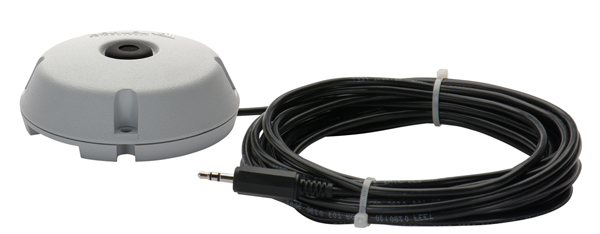
3# How to choose the right Mic cables?
The signal from Microphone is very weak, audio signal can be easily interfered. To avoid the interference, the microphone cable should be as short as possible. Ensuring the high quality audio monitoring, the microphone cables must be shielded and balanced mic cable.
Get My Latest Posts
Subscribe to get the latest updates.
Your email address will never be shared with any 3rd parties.